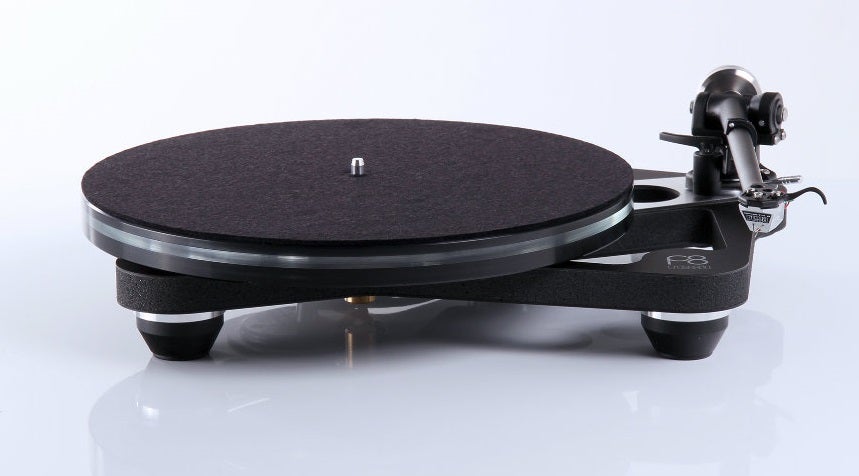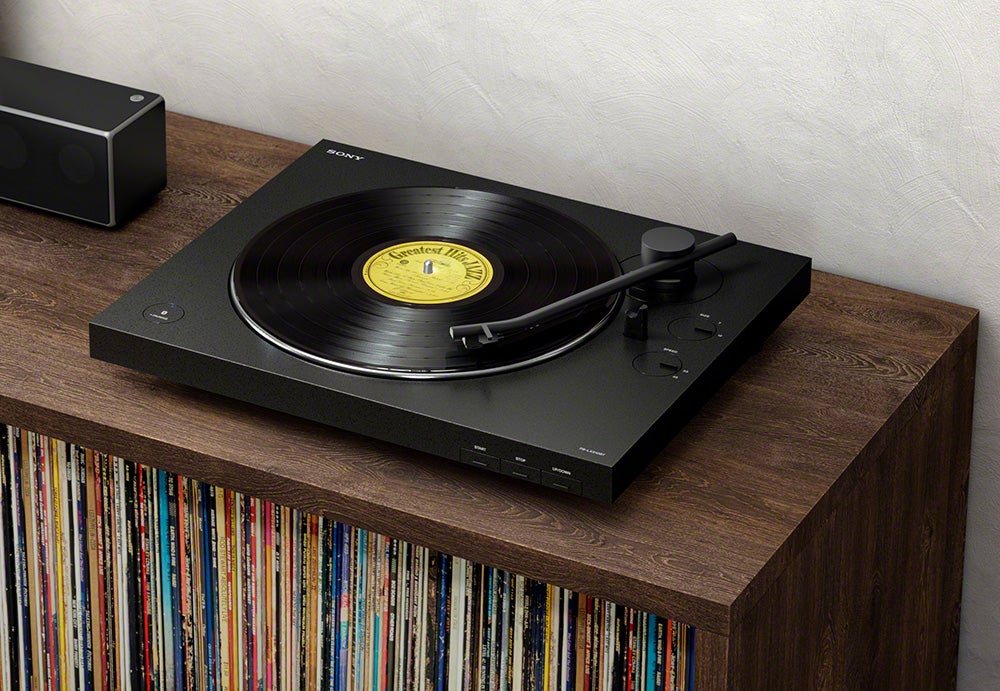Audio Pro G10 Review
A Scandi wireless speaker with Google smarts
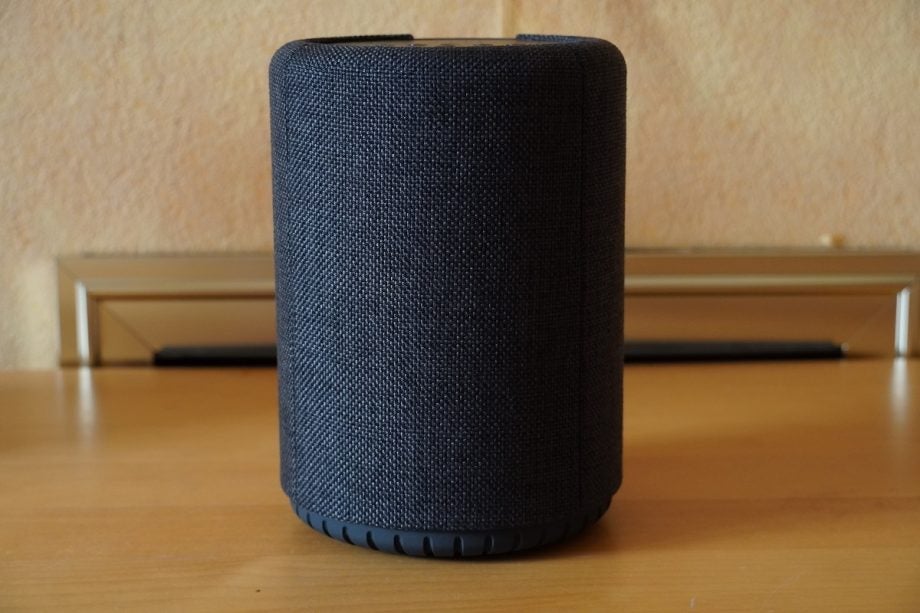

Verdict
Sound improvements as well as the addition of smarts and wider multi-room support over the previous model make the Audio Pro G10 a better wireless speaker than its predecessor.
Pros
- Great sound
- Built-in smarts
- Handsome looks
- Multi-room support
Cons
- More expensive than previous model
- Chromecast downsamples Tidal Master tracks
Key Features
- Multi-roomSupports Google and Apple multi-room ecosystems
- Google AssistantGoogle’s digital butler is built in and can be summoned hands-free or via a button
Introduction
In the past couple of years, Audio Pro has taken to revisiting its older products and giving them a spruce-up.
One of the latest models to receive a refresh is the A10 – or, as the new model is called, the G10. The G10 matches the A10 in the looks department, but where the older A10 lacked built-in smarts and a coterie of streaming options, the new G10 features AirPlay 2, Chromecast and smart assistance from Google.
To our ears there’s a change in how the speaker sounds, too. Are the tweaks and new additions an improvement, or should Audio Pro have left well enough alone?
Availability
- UKRRP: £250
- USAunavailable
- EuropeRRP: €250
- Canadaunavailable
- Australiaunavailable
The G10 was announced in October 2020 and went on sale in November of the same year for £225.
Design
- Attractive, minimalist looks
- Very easy to operate
- No preset buttons
What to say about the G10 that I didn’t already remark upon with the A10? They are virtually identical.
Both sport a cylindrical shape, and like the A10, the G10’s small footprint helps with positioning the unit. Given it has a trailing mains cable and no built-in battery, it will be restricted a little in the number of places it can reach, however. Bookshelves, tables and generally low-reaching shelves should be fine. That said, the power cable is decently long on its own.
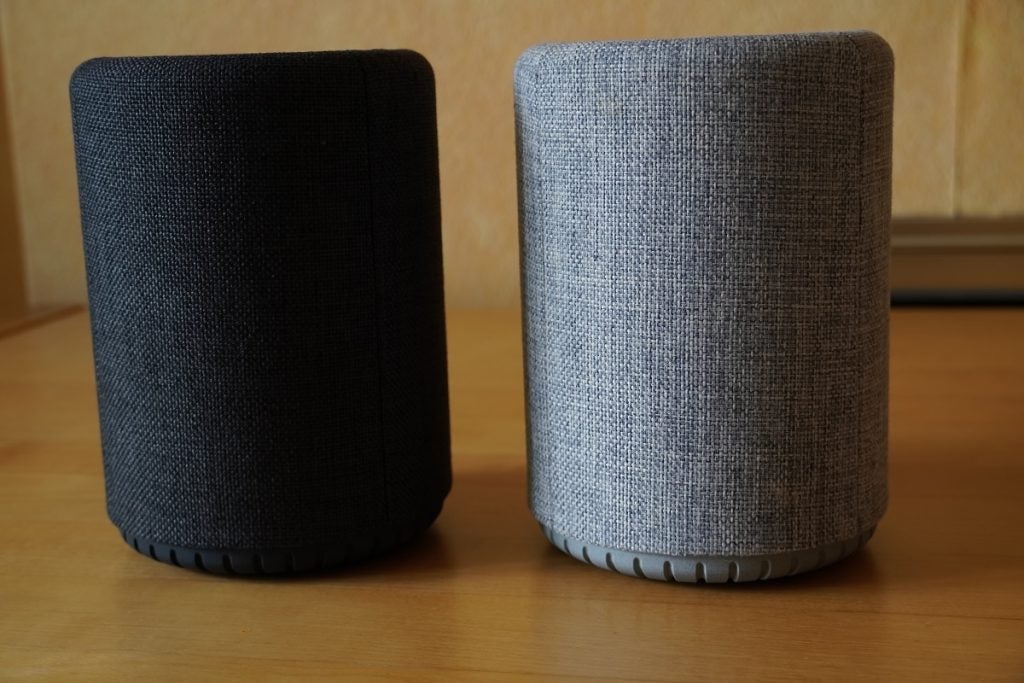
Aesthetically, the G10 is in keeping with its A10 forebear. Available in light and dark grey finishes, the colourways are ever so slightly different (lighter and darker, in both instances). The fabric that wraps around the speaker once again has a slightly coarse feel to it, but it’s subtly different in terms of how it’s knitted together. That appears to be the theme with the G10 – similar, but also subtly different.
Buttons are located on the speakers’ top plate – there’s no remote included – and these have also been tweaked. Their placement has shifted towards the middle, with the Audio Pro logo now assigned towards the bottom.
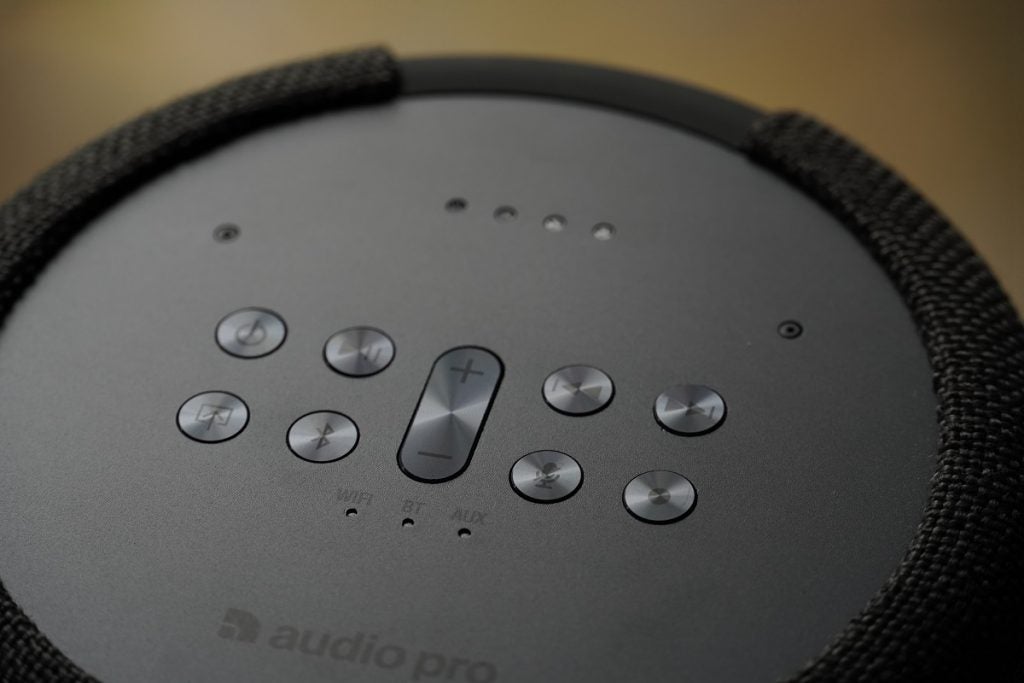
The arrangement of the buttons is different, too – the four preset buttons are gone and there’s now a microphone button (for privacy), a ‘Push to Talk’ button to engage with Google Assistant, along with the usual coterie of playback, volume, Bluetooth pairing and source selection buttons. Below are little LEDs that indicate which mode (Wi-Fi, Bluetooth, AUX) the G10 is in. Simplicity defined.
The LED indicators at the top differ from before – there are only four, which I think is better when it comes to figuring out volume levels. They blink and flash when you engage with Google Assistant or press a button, providing some visual feedback. Either side of the LEDs are tiny little microphones that you’d likely think are little screw holes.
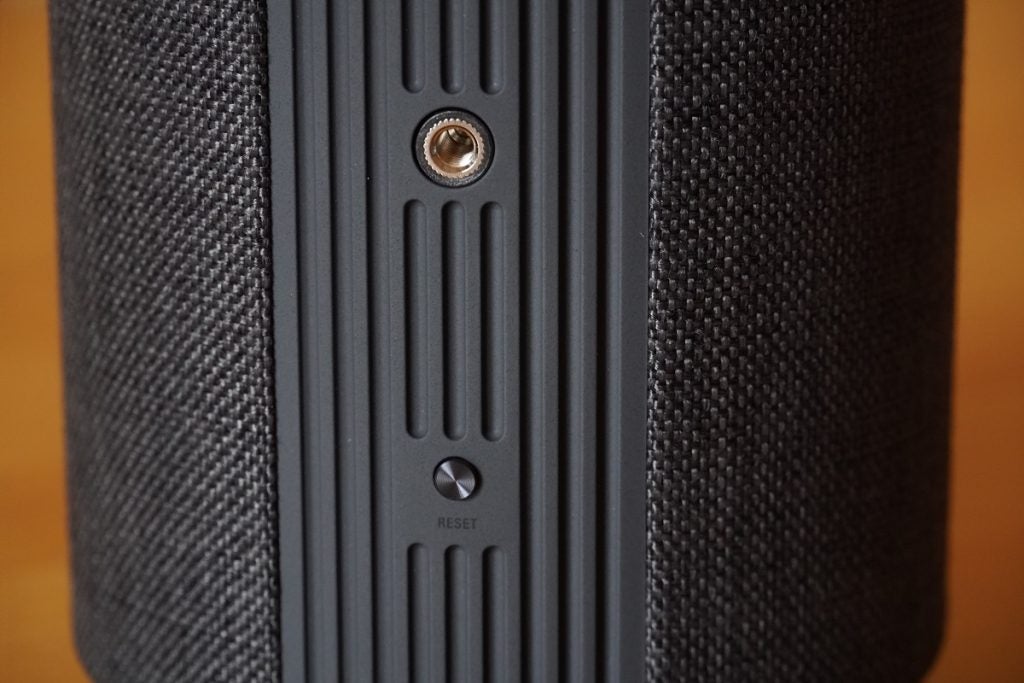
Around the back is a socket for a wall bracket, while the Connect button has been replaced by a Reset button – the reasons why I’ll go into in the next section. Right at the base of the speaker is the power socket and an AUX connection, while at 1.5kg, the A10 and G10 weigh exactly the same.
The G10 is the same fetching-looking speaker as it was in its previous incarnation, and I like that. The changes here are mostly subtle and don’t mess with what was (and is) a pretty neat and stylish appearance. As you’d expect from a Swedish company, the G10 is rather Scandi and minimalist in its outlook.
Features
- Smooth Google Assistant integration
- Google and Apple multi-room
- Supports Chromecast
So, about that Connect/Reset button. It’s a small change that has a significant impact. The Connect button on the A10 enabled the speaker to join Audio Pro’s web of connected speakers. With Google onboard, that’s no longer possible.
While the G10 doesn’t work with Audio Pro’s own multi-room speaker system, then, it’s now incorporated into the Google Home network, which adds built-in Google Assistant and Chromecast support. The EQ customisation within the Google Home app is rather limited though, with a slider for bass and treble the only options.
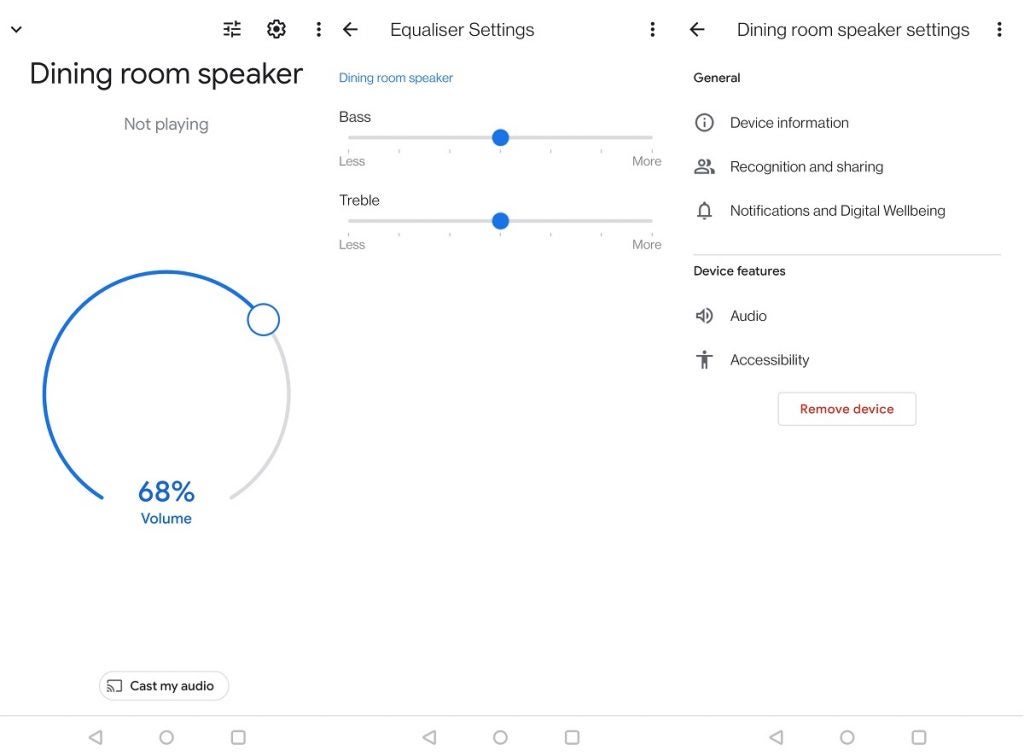
Google Assistant can be activated either hands-free with the “Hey Google” or “OK Google” phrase, or by tapping the ‘Push to talk’ button on the speaker. Activation and getting information from the digital assistant worked smoothly during testing, the speaker’s microphones able to pick up my voice from across the room without issue. Engaging with Google Assistant does pause music while she listens to your query, though.
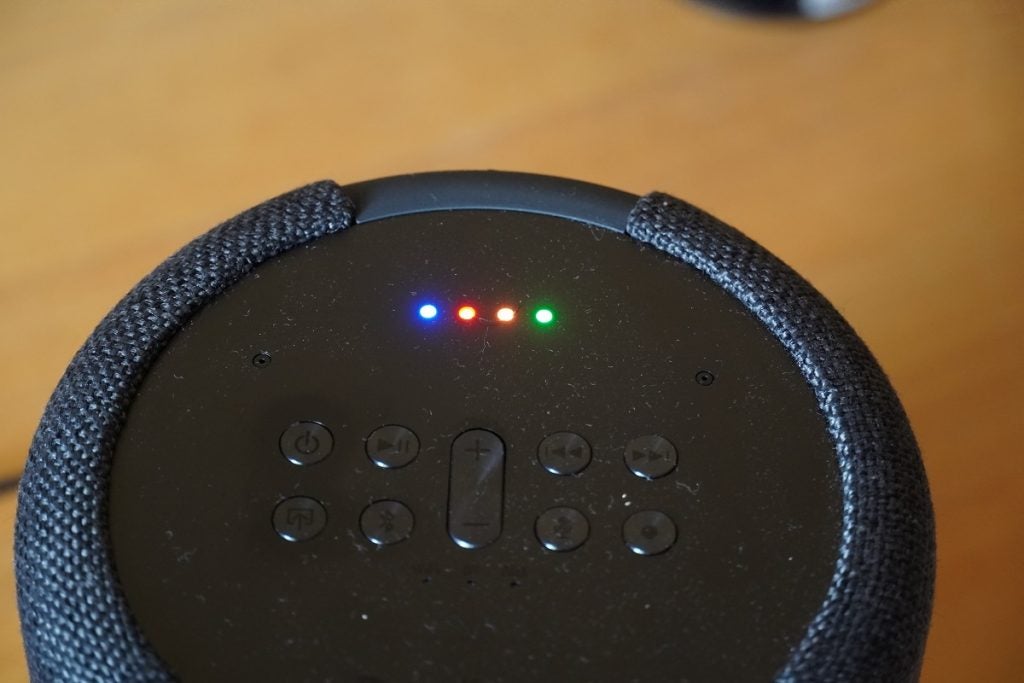
Further wireless options come by way of Bluetooth 5.0 and AirPlay 2. The latter is an upgrade over the A10’s AirPlay, bringing with it Apple’s multi-room support. If you have an A10 and are wondering if it can be grouped with the G10, the answer is no – multi-room doesn’t transcend the different AirPlay generations.
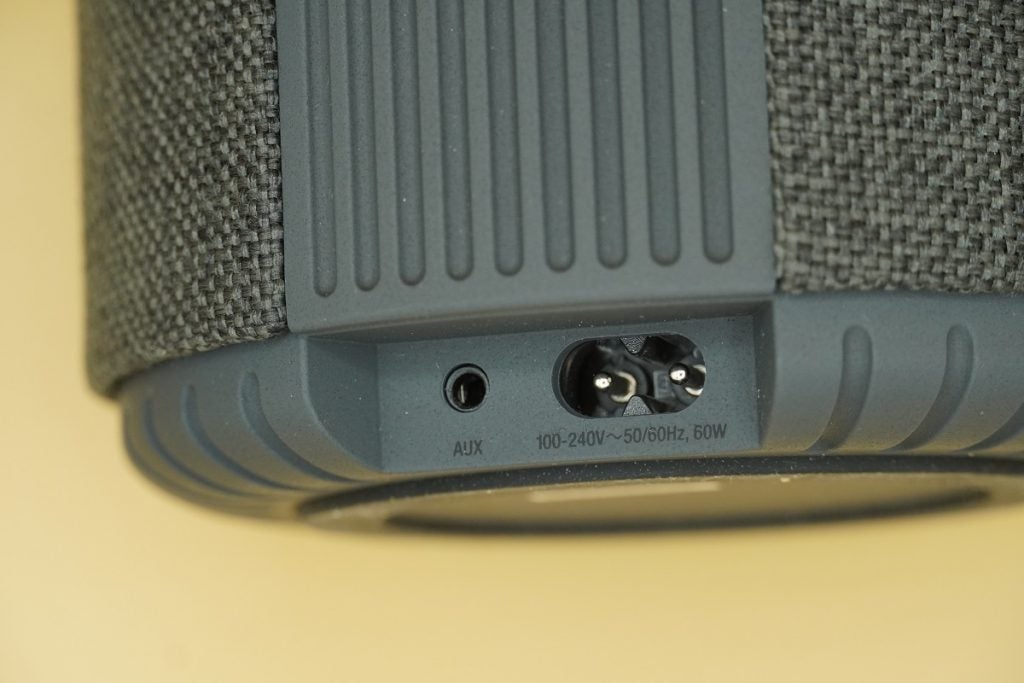
Around the back is a 3.5mm jack if you fancy plugging straight into the speaker, especially useful if you want to play high-quality music files. Speaking of: file support matches the A10 in MP3, WMA, AAC, FLAC and Apple Lossless. That means the G10 can play tracks up to lossless quality and with AirPlay 2 and Apple Lossless onboard, that puts the speaker in good shape for taking advantage of Apple Music’s higher-quality tracks.
Sound quality
- Punchy, full-sounding tone
- Improved performance with vocals
- Solid bass
The Audio Pro G10 shares the same driver set-up as the A10 with its 1.25-inch BMR (Balanced Mode Radiator) and 3-inch woofer. My presumption was it would sound fairly similar, but Audio Pro has tuned the G10 to wring out a better performance, particularly with vocals.
Using an iPad Pro to send music to both speakers over a Bluetooth connection, the G10 delivers a punchier performance that leaves the A10 sounding lightweight by comparison. The G10 sounds bigger and describes music with more weight.
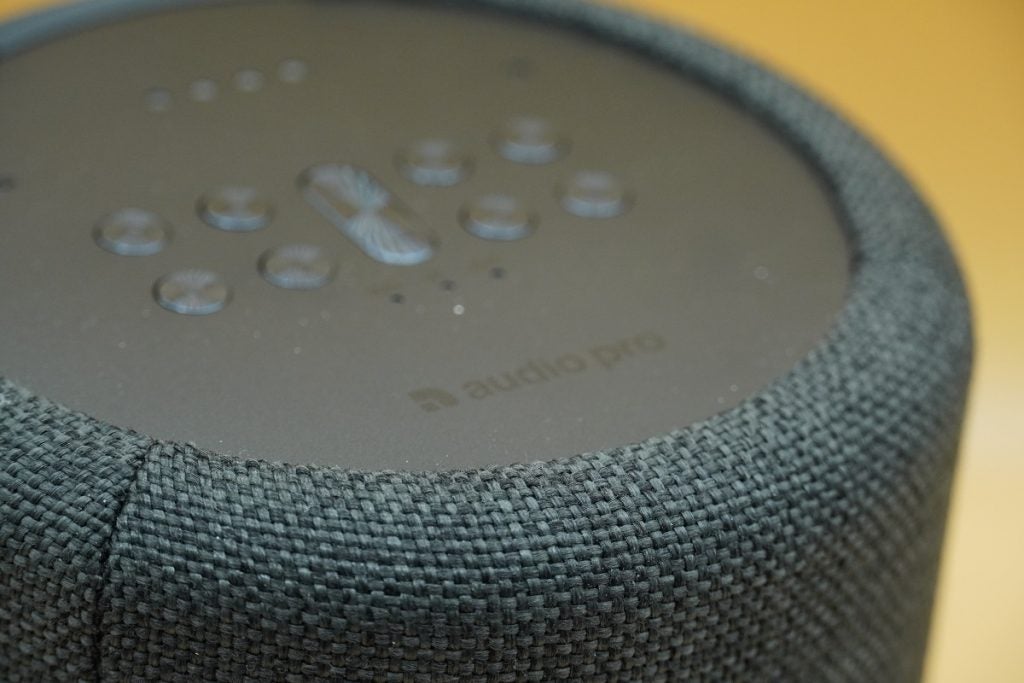
It handles vocals better, too, and it strikes a fuller, more textured tone with Regina Spektor’s voice in her cover of While My Guitar Gently Weeps, whereas the A10 is thinner in its description.
Perhaps one regard where the A10 ekes out slightly better performance is with low-level detail/background detail. The weightier tone of the G10 can present itself as a bit thick, obscuring detail slightly where the A10 has a lighter touch, so it can scrub up some more detail with clarity too.
Given the conical shape of the G10, the soundstage it creates is narrow rather than wide, so any sense of stereo imaging is off the table. But despite that lack of width, this isn’t a speaker where the soundstage becomes congested or cluttered.
A track such as Wonder Woman, a Call to Stand / A World Awakened shows a good sense of clarity, detail and fidelity, despite the hurly burly nature of the track. It’s better if you’re face on to the speaker, too – while it’s reasonably consistent in dispersing sound, it isn’t a 360-degree delivery.
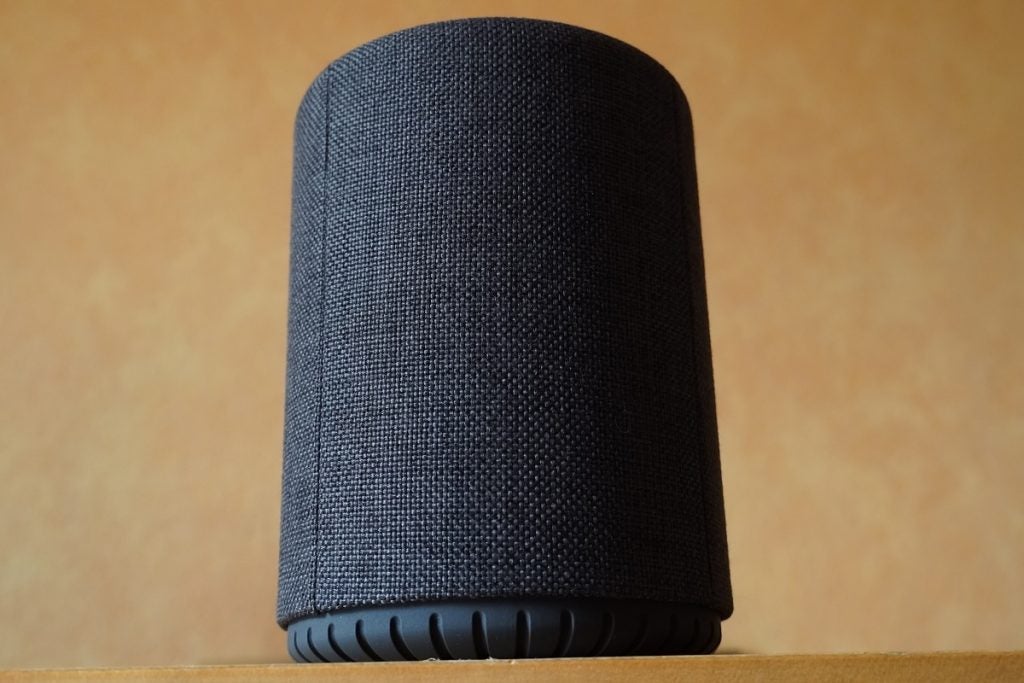
Bass was a weaker aspect of the A10’s and it’s much more assertively conveyed with the G10. Initially I felt it lacked variation, but that’s not true. Bass hits harder, and there’s variation on offer so low-end frequencies don’t become entirely one note. However, what its bass performance does lack is much in the way of depth and extension.
Tonally, the mid-range comes across naturally enough; the guitar in Tom Morello’s cover of Voodoo Child is clear and detailed, and the G10 handles voices – male and female – with clarity, smoothness and confidence. The only sense of sibilance apparent is when the volume is turned up towards its maximum. Treble notes stand out above the fray, defined well and with clarity, avoiding any harshness or dullness.
Dynamically it gives an entertaining sense of quiet and loud, and rhythmically it can hold its own with fast, energetic tracks with its good sense of timing and entertaining flow.
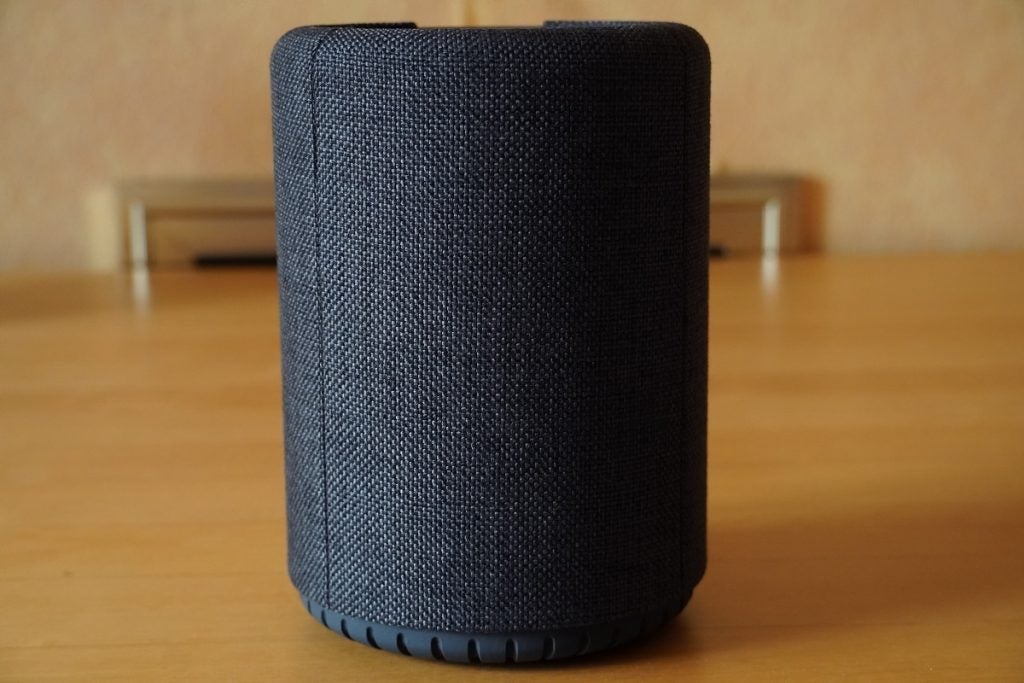
It’s fairly consistent across the different wireless connections, although to my ears Chromecast sounded best, followed by Bluetooth and AirPlay 2. Both Water Travellers from Joe Hisaishi’s Dream Songs album and What is Grief from the Wandavision soundtrack via AirPlay sounded a little too crisp at the expense of detail, whereas casting to the G10 struck a better balance in terms of detail, tone and dynamism.

However, an issue with Chromecast is that it downsamples Tidal Master tracks to CD quality, whereas on an iPad Pro at least, playing the same track over AirPlay 2 appears to be done bit-perfectly. That aside, the G10 is an improvement over the A10. If you’re after a wireless speaker with smarts and multi-room capabilities, then the Audio Pro G10 hits the right spot.
Should you buy it?
You want a smart speaker with entertaining sound The G10 makes improvements in the right areas for a better music performance over the A10. It looks attractive, and with the addition of built-in smarts, it’s a much more capable and convenient wireless speaker. It ticks all the right boxes.
You’re not interested in smarts Not everyone needs or wants a smart speaker, and if that’s you then the addition of Google smarts won’t appeal – although you’re not as well stocked in terms of direct alternatives given the all-pervasive nature of smarts.
Final Thoughts
Sound improvements as well as the addition of smarts and wider multi-room support over the previous model make the Audio Pro G10 a better overall wireless speaker package than its predecessor.
FAQs
No, the G10 features Google Assistant so you won’t be able to get Alexa functioning with this speaker.
You got light grey and dark grey versions of the speaker. Both cost the same.
The G10 works within the Google multi-room system via the Google Home app, as well as iOS through Apple AirPlay 2.
Specs
Jargon buster
AirPlay 2
AirPlay 2 is the second generation of Apple’s proprietary wireless streaming tech, which is built into all of its hardware products (and supported by many others). It’s designed to pass content from your Apple device - music, video and photos - to a compatible receiver over your Wi-Fi network such as a TV, wireless speaker, AV receiver etc.Multiroom audio
Multi-room refers to the act of grouping wireless audio systems together to play/control music throughout a home. For example, Multi-room systems can allow for the same piece of music to be played on all connected systems, or different music played on each individual speaker.

